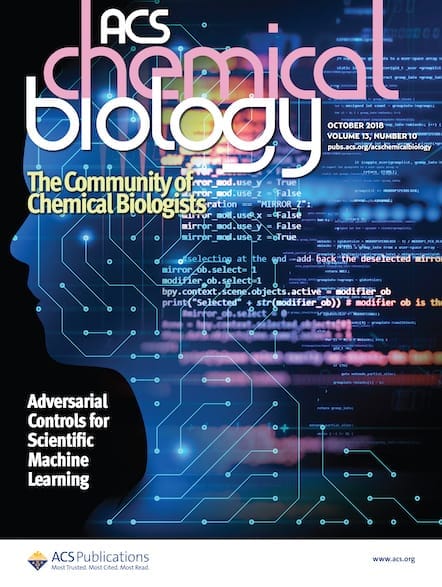Listen to an interview conducted between Laura L. Kiessling, Editor-in-Chief of ACS Chemical Biology, and CRISPR investigator and former Associate Editor Jennifer A. Doudna.

Jennifer A. Doudna: Well, it certainly has not been a straight path, that’s for sure. It’s a good question, and it’s hard to give you a really concrete answer, because I do not think there’s any one way that I think about projects in the lab, necessarily. I think that, for me, science is always a collaborative process, whether it is students I’m working with in lab, or other faculty members or their students that we’re collaborating with, or reading a paper and getting an idea from it and saying, “Gee, that’s something we ought to do,” or listening to a podcast. Anything, right?
How did I get into that? Well, that really came along because of a postdoc that came to the lab, Jeff Kieft, who was very interested in getting into that area. So I thought, “Wow, that sounds pretty exciting. I don’t know anything about it, but it sounds like it has a lot to do with the kinds of problems that we’re thinking about with ribozymes.” And so we started off in that direction, and then eventually, I moved my lab to UC Berkeley in 2002. Part of my motivation for that move, although I had loved my time at Yale honestly, but I also sensed a really exciting opportunity at Berkeley to take my research in what I thought was a bit more of a biological direction. Thinking really about how to understand molecular structure in the context of a cellular system.
To do that, we started working on small RNAs that are involved in RNA interference, which is a pathway in animal and plant cells that uses very tiny pieces of RNA to control the levels of proteins that are made in those cells. So we were working again on the very fundamental aspects of that. Oddly enough, that’s actually how I got into CRISPR, because it was through that work that a colleague at Berkeley, who works on bacterial communities and does a lot of DNA sequencing in bacteria, Jill Banfield, someone I had only met maybe once or twice—
LLK: She’s awesome! I really like her a lot.
JAD: She was at Wisconsin, then moved to Berkeley. She was working on these bacterial genome sequences and finding examples of CRISPR arrays. Of course, at that time, nobody knew what they did, and her hypothesis was they might be operating at the level of RNA: copies that would be made in the cell and then somehow deployed to protect cells from future viral infection. And so she Googled, “Who at Berkeley works on little RNAs?” My name popped up, and she called me and said, “I think we need to talk.” And the rest is history.
